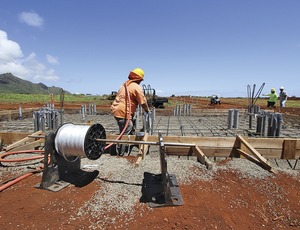

Advocates of renewable energy are not cheering the proposed sale of Hawaii's principal electric utility to the nation's largest solar and wind energy producer. Opponents of the deal fear the buyer may halt the growth of distributed solar generation to favor utility-scale projects it would operate. Similar conflicts have erupted elsewhere in the industry as rooftop solar panels threaten the century-old electric-utility business model.
Hawaiian Electric Industries Inc. and Juno Beach, Fla.-based NextEra Energy Inc. announced in December that HEI has agreed to be purchased by NextEra in a transaction valued at $4.3 billion. HEI is the parent of Hawaiian Electric Co. Inc. (HECO), which supplies power to 95% of the state. NextEra is the parent of investor-owned Florida Power & Light Co. (FP&L) and NextEra Energy Resources LLC, a non-utility generator that produces more than 10,200 MW of power from wind energy and more than 575 MW from solar energy. "We support Hawaiian Electric's efforts to reduce reliance on oil and increase renewable energy, including economic solar," a NextEra Energy spokesman says.
With no indigenous fossil fuels, Hawaii depends almost entirely on imported fuel for power generation. The state-federal partnership Hawaii Clean Energy Initiative's goal is 70% clean fuel by 2030, with 40% of its generation coming from renewables and 30% of demand reduction through efficiency improvements.
Average retail electricity rates in 2012 were the nation's highest, at 34.04¢ per kilowatt-hour. Seeking relief from those rates, more than 11% of HECO's customers have installed rooftop solar panels, more than at any other U.S. utility, says Peter Rosegg, HECO spokesman. But HECO stopped accepting applications for distributed solar interconnections in September 2013, and criticism of that action has been harsh. The delay was needed to upgrade the grid for more interconnections, but the backlog of 5,000 applications for rooftop panels will be approved by April, and HECO will continue accepting applications thereafter, he says.
Critics of the deal are not mollified. NextEra is a "killer" in the independent power-producer business, says a source who commented anonymously because he is an electrical contractor in Hawaii. FP&L has 4.7 million customers in Florida, but only 2,565 of them have rooftop solar panels, says Robert Harris, state lead in Hawaii for the Alliance for Solar Choice. "The utility with the least amount of solar in the country is acquiring the utility with the most," he notes. Polls show 95% of Hawaiian customers want rooftop solar panels, he says.
"The merger presents an opportunity for regulators to exert influence on a utility," says David Cruthirds, a regulatory attorney and consultant. "As a non- incumbent, NextEra is not guaranteed to have the same level of influence as in Florida," he explains.
Eight wind projects totaling 206 MW of generation are online in Hawaii and supply 5.1% of all in-state electricity, but no others currently are being developed, according to the American Wind Energy Association. Installed solar capacity totals 417 MW, of which 12% is utility scale, 36% is commercial, and 52% is residential, the Solar Energy Industries Association reports.
Turnkey contractor REC Solar is now constructing Hawaii's largest photovoltaic system, 14.535 MW (DC) in Anahola, for the Kauai Island Utility Cooperative. The proposed merger "is going to be a positive development for some of the larger installations, not so positive for smaller distributed generation projects," says Drew Bradley, director of business development. "NextEra has a balance sheet that would allow them to upgrade the grid" with storage, demand response, a smart grid and other improvements, he adds.

Post a comment to this article
Report Abusive Comment